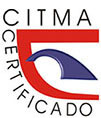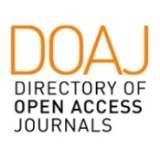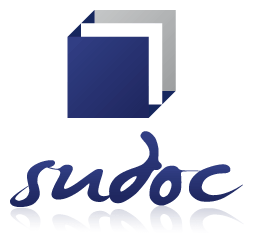Exploratory images. Notes from photographic language
Keywords:
Photography as a research object, Visual Arts-based Research Methodology, Didactics of methodology, Visual Arts, Jean-Claude Lemagny's aesthetic clock or circle of imagesAbstract
Introduction: A methodology for photography as a research object points out, in a precise and objective manner, the fundamental visual, aesthetic, communicative and operative problems presented by its teaching in non-systemic training processes. Resorting to languages and forms of (re)presentation, which derive towards other fields or manifestations of artistic creation, such as those presented in this article, allow us to characterize the formal and conceptual state of photography as a didactic and investigative process.
Methods: Considerations and procedures that allowed the assumption of different research methodologies based on the Visual Arts, such as independent photography, the photographic series, the photographic essay, the photodiscourse and the visual quotation, are presented.
Results: Some considerations that facilitate the understanding of the essentiality of these terms from the grammar of a new «way of seeing», according to Jean-Claude Lemagny’s aesthetic clock or circle of images, are identified and analyzed.
Conclusions: Photography as a research object proposes to use photography as a tool to investigate and explore different aspects of society, culture and the artistic-social environment. Research based on the Visual Arts uses the methodology of qualitative research, where we work with various techniques and visual tools such as photography. This methodology involves observing, analyzing and documenting visual images to understand and reflect on different didactic-research aspects, but also within the expressive-communicative environment of the image. Jean-Claude Lemagny’s aesthetic clock or circle of images allows to analyze and understand the process of production and reception of photographic images.
Downloads
References
BARTHES, R. (2017 [1961]). El mensaje fotográfico. En Un mensaje sin código: Ensayos completos de Roland Barthes en Communications, 7-20. Ediciones Godot.
BERGER, J. (2016 [1972]). Modos de ver. Gustavo Gili.
BRAU, G. (2020). La dimensión variable. Super foto digital, 34(290), 57-61.
CARTIER-BRESSON, H. (2016 [1976]). Fotografiar del natural (2da. ed.). Gustavo Gili.
CRESPO MARTÍN, B. (2012). El libro-arte / libro de artista: Tipologías secuenciales, narrativas y estructuras. Anales de Documentación, 15, 1. http://dx.doi.org/10.6018/ analesdoc. 15.1.125591
DEWEY, J. (2008 [1980]). El arte como experiencia. Paidós Ibérica.
FONTCUBERTA, J. (3 de junio de 2004): La fotografía será narrativa o no será. El Mundo, suplemento El Cultural (36).
GUBERN, R. (2007 [1987]). La mirada opulenta. Exploración de la iconosfera contemporánea. Gustavo Gili.
HAMILTON, P. (2006). Visual Research Methods. SAGE Publications Ltd.
HERNÁNDEZ, F. (2008). La investigación basada en las artes. Propuestas para repensar la investigación en educación. Educatio Siglo XXI, 26, 85-118.
JEFFREY, I. (2009 [2008]). Cómo leer la fotografía. Random House Mondadori.
LEMAGNY, J-C. (1992). Le cercle d’images. En L’ombre et le temps. Essais sur la photographie comme art, 81-92. Nathan.
MELLADO, J. M. (2013 [2007]). Fotografía de alta calidad. Anaya Multimedia.
MOYA MÉNDEZ, M. (2021). La investigación-creación en arte y diseño. Teoría, metodología, escritura. Feijóo.
PROSSER, J. (2003 [1998]). Image-Based Research. A Sourcebook for Qualitative Researchers. Routledge.
REAL ACADEMIA ESPAÑOLA (2005). Diccionario panhispánico de dudas. Santillana.
RODRÍGUEZ AGUILAR, J. L. (febrero, 2021). Apuntes sobre la formación no sistémica de la fotografía, a razón de una exposición en La Habana. Ponencia presentada en el Congreso Internacional Pedagogía 2021, La Habana, Cuba.
ROLDÁN, J. y MARÍN, R. (2012). Metodologías artísticas de investigación en educación. Ediciones Aljibe.
SLÁVOV, I. (1989). El kitsch; fenomenología, fisonomía y pronóstico. Arte y Literatura.
TRIBE, M. y JANA, R. (2009 [2006]). Arte y nuevas tecnologías. Taschen.
WILLIAMS, V. (2012). When Photography Really Works. Barron’s Educational Series, Inc.
Downloads
Published
How to Cite
Issue
Section
License
Copyright (c) 2024 Jorge Luis Rodríguez Aguilar

This work is licensed under a Creative Commons Attribution-NonCommercial 4.0 International License.
Usted es libre de:
Compartir — copiar y redistribuir el material en cualquier medio o formato
Adaptar — remezclar, transformar y construir a partir del material
La licenciante no puede revocar estas libertades en tanto usted siga los términos de la licencia
Bajo los siguientes términos:
Usted es libre de:
Atribución — Usted debe dar crédito de manera adecuada, brindar un enlace a la licencia, e indicar si se han realizado cambios. Puede hacerlo en cualquier forma razonable, pero no de forma tal que sugiera que usted o su uso tienen el apoyo de la licenciante.
NoComercial — Usted no puede hacer uso del material con propósitos comerciales.
No hay restricciones adicionales — No puede aplicar términos legales ni medidas tecnológicas que restrinjan legalmente a otras a hacer cualquier uso permitido por la licencia.



















